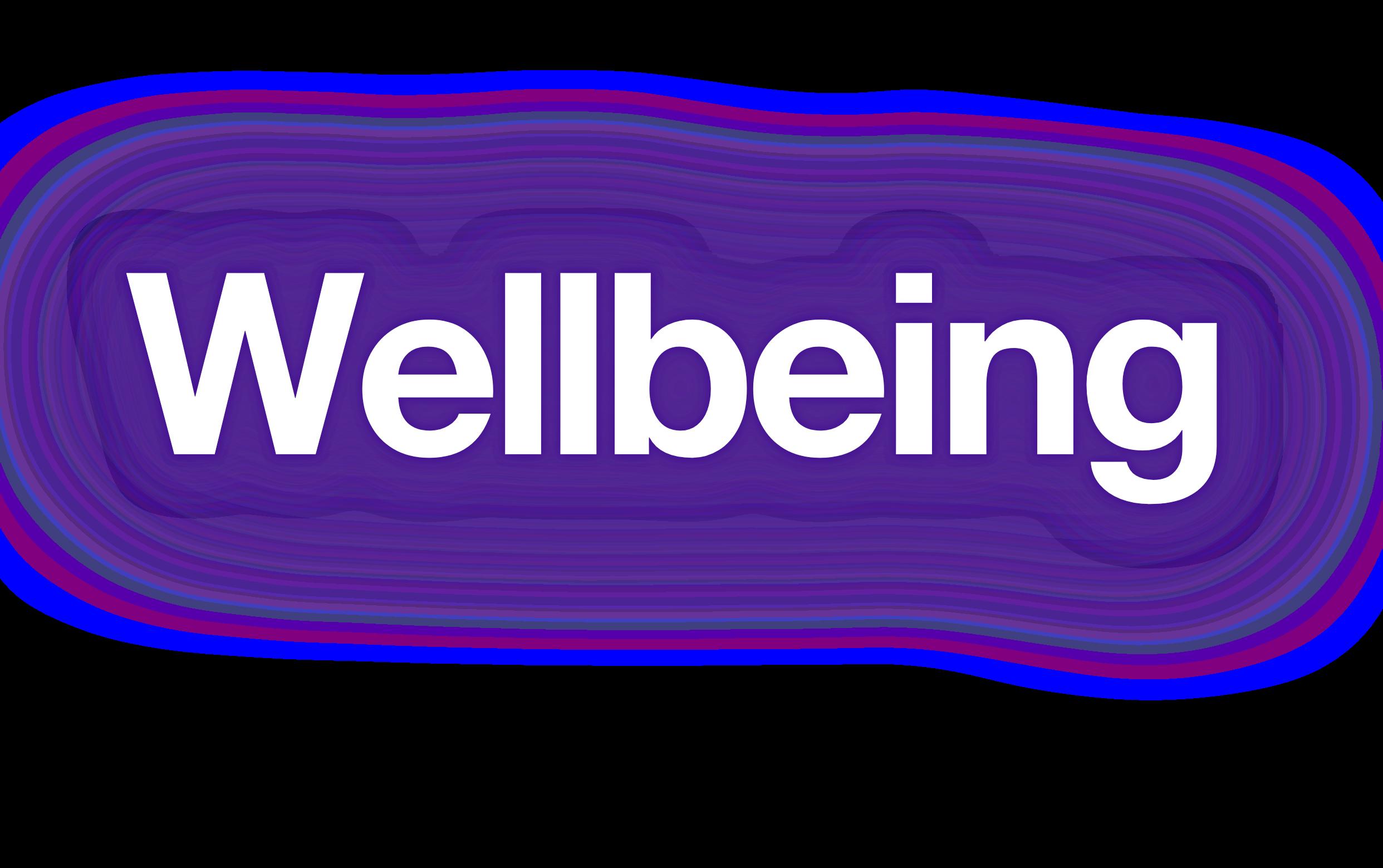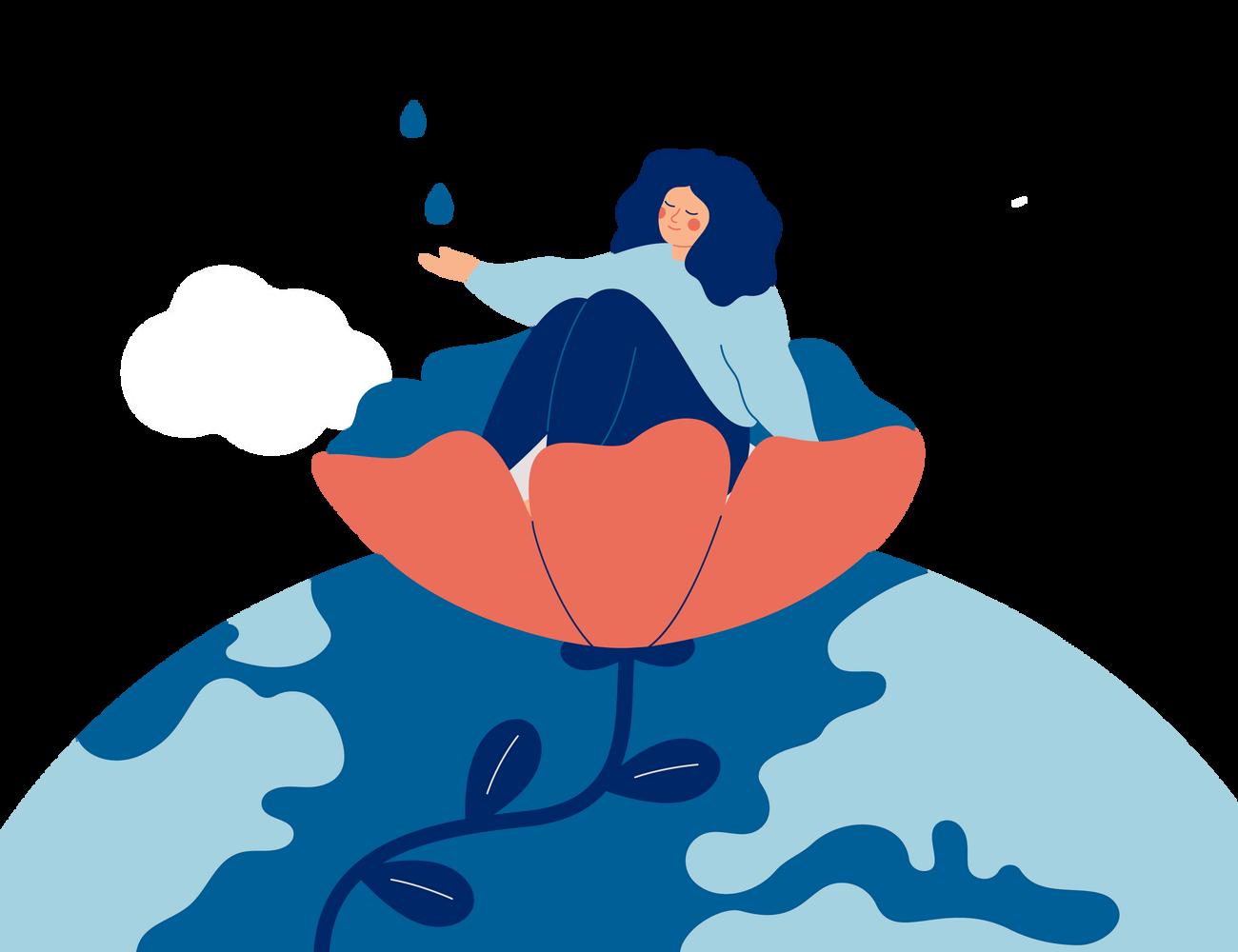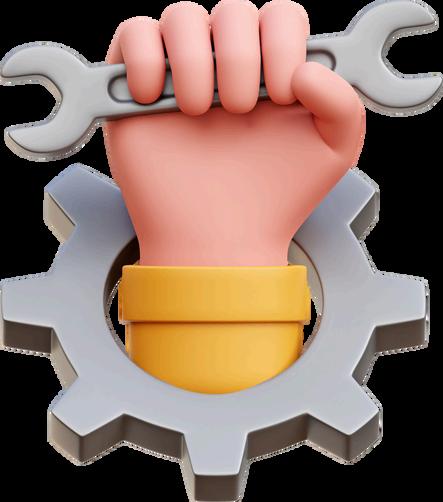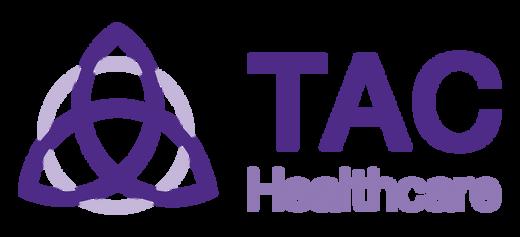

International Women’s Day
March Challenge

Sleep Hygiene Boost
Understanding Mindfulness
Volunteer with CleanupUK

Hand-Arm & Whole Body

Vibration at Work





International Women’s Day
March Challenge

Sleep Hygiene Boost
Understanding Mindfulness
Volunteer with CleanupUK

Hand-Arm & Whole Body

Vibration at Work


Welcome to our March issue of our monthly Employee Wellbeing Magazine – your trusted companion for inspiration, growth, and support on your journey to a healthier and more balanced life.
As spring approaches, let’s focus on cultivating fresh habits that energise both your mind and body, while nurturing a sense of balance and positivity in your daily life.
This month, we’re shining a spotlight on the power of mindfulness to boost mental clarity, offering simple tips to refresh your routine, and inviting you to explore energising daily challenges to help you bloom in both your personal and professional life.

“Happiness is not something readymade. It comes from your own actions.”
Dalai Lama



Sleep is a cornerstone of good health, yet many of us struggle to get the quality rest we need. Sleep hygiene refers to the practices and habits that promote consistent, restful sleep. By improving your sleep hygiene, you can enhance your overall wellbeing, productivity, and quality of life.
Research from Mental Health UK reveals that 1 in 5 people in the UK aren’t getting enough sleep. Adults aged 18-64 are recommended to get 7-9 hours of sleep each night to maintain optimal health and functioning.
Sleep hygiene encompasses a variety of behaviours and environmental factors that can influence the quality and duration of your sleep Good sleep hygiene can help you fall asleep faster, stay asleep longer, and wake up feeling more refreshed Here are some key components:
Consistent Sleep Schedule: Going to bed and waking up at the same time every day, even on weekends, helps regulate your body’s internal clock This consistency can make it easier to fall asleep and wake up naturally
Comfortable Sleep Environment: Your bedroom should be a sanctuary for sleep Ensure your mattress and pillows are comfortable, and keep the room cool, dark, and quiet Consider using blackout curtains, earplugs, or a white noise machine if needed
Limit Exposure to Screens: The blue light emitted by phones, tablets, and computers can interfere with your body’s production of melatonin, the hormone that regulates sleep. Try to avoid screens for at least an hour before bedtime and make use of blue light filters on your devices.
Mindful Eating and Drinking: Avoid large meals, caffeine, and alcohol close to bedtime. These can disrupt your sleep cycle and make it harder to fall asleep or stay asleep
Relaxation Techniques: Incorporate calming activities into your pre-sleep routine This could include reading, taking a warm bath, practising meditation, or doing gentle yoga These activities can help signal to your body that it’s time to wind down

Limit Naps: While short naps can be beneficial, long or irregular napping during the day can negatively affect your nighttime sleep If you need to nap, try to keep it under 30 minutes and avoid napping late in the day
Research indicates that the, 4-7-8 breathing method can help you fall asleep faster This technique promotes relaxation by increasing oxygen in the bloodstream, slowing the heart rate, and releasing more carbon dioxide from the lungs
Position Your Tongue: Place the tip of your tongue against the ridge of tissue just behind your upper front teeth and keep it there throughout the exercise
Exhale Completely: Exhale fully through your mouth, making a whooshing sound
Inhale Quietly: Close your mouth and inhale quietly through your nose to a mental count of four
Hold Your Breath: Hold your breath for a count of seven
Exhale Completely: Exhale fully through your mouth, making a whooshing sound to a count of eight
Repeat: Repeat this cycle three more times for a total of four breaths
By prioritising sleep hygiene, you can improve your sleep quality and overall wellbeing Remember, good sleep is not a luxury it’s a necessity for a healthy, balanced life Start making small changes today, and enjoy the benefits of a good night’s sleep

Useful Resources

Volunteering with CleanupUK is a simple yet powerful way to contribute to a cleaner, healthier, and more vibrant environment
By joining a local cleanup event or organising one yourself, you can help reduce litter, protect wildlife, and improve the overall appearance of your community
It's a great opportunity to connect with neighbours, get some exercise, and make a positive impact on the planet
Why Volunteer with CleanupUK?
Litter poses a serious threat to animals By removing waste from natural habitats, you help create a safer environment for wildlife
A clean and well-maintained area fosters a sense of pride among residents and can even encourage others to avoid littering in the future

ng in cleanup events is a great et like-minded people and n your sense of community
Picking up litter keeps you moving, making it a great low-impact exercise option
Volunteering for a cause like CleanupUK has been shown to improve mental health Spending time outdoors, engaging in meaningful activities, and seeing the tangible results of your efforts can reduce stress, boost your mood, and give you a sense of accomplishment
By volunteering with CleanupUK, you’re not just picking up litter you’re fostering a cleaner, more caring society. So, grab a litter picker, rally some friends, and start making a difference today!

International Women’s Day (IWD), celebrated on 8th March, is a global event that honours the achievements of women and advocates for gender equality.
The origins of International Women’s Day can be traced back to the early 20th century, a time of great social upheaval and burgeoning movements for women’s rights. The idea of an international day was proposed at the 1910 International Socialist Women’s Conference in Copenhagen, and the first International Women’s Day was celebrated in several European countries on the 19th of March 1911
International Women’s day is not only about recognising women’s contributions but also about promoting their wellbeing and empowerment By focusing on these aspects, we can create a more inclusive and supportive environment for everyone
Wellbeing is a holistic concept that encompasses physical, mental, and emotional health For women, achieving wellbeing can be particularly challenging due to various societal pressures and genderspecific issues. International Women’s Day provides an opportunity to address these challenges and promote practices that enhance women’s overall wellbeing.
Mental health is a crucial component of wellbeing Women often face unique stressors, such as balancing work and family responsibilities, dealing with gender-based discrimination, and managing societal expectations.
On International Women’s Day, it’s important to highlight the significance of mental health support and encourage open conversations about mental wellbeing. This includes looking at how this can be encouraged in the workplace through supportive conversations about mental health, engagement with EAP services and supporting one another to use strategies that will boost wellbeing
Achieving a healthy work-life balance is vital for wellbeing. Women often juggle multiple roles, and the pressure to excel in all areas can be overwhelming. Below are some practical but simple ideas to relieve stress and prioritise your wellbeing whilst in work: International Women's Day Catalyst - Driving Change for Women LEAN IN - Fostering Women's Leadership
Take Breaks: Step away from work briefly to stretch or relax
Practice Breathing: Deep breathing can reduce stress and improve focus
Stay Hydrated: Keep a water bottle handy to maintain energy and focus
Try Mindfulness: Apps like Headspace or Calm offer quick relaxation techniques
Set Boundaries: Stick to work hours and avoid tasks during breaks.
Recognising and celebrating women’s achievements is a powerful way to boost morale and promote wellbeing Highlighting the successes of female employees, colleagues, and community members can inspire others and create a positive, inclusive atmosphere On International Women’s Day, take the time to acknowledge and celebrate the contributions of women in your organisation and community
International Women’s Day is a time to celebrate the achievements of women and advocate for gender equality. By focusing on wellbeing and empowerment, we can create a more supportive and inclusive environment for everyone. Let’s use this day to promote mental and physical health, work-life balance, and opportunities for growth, ensuring that all women have the resources and support they need to thrive Together, we can make a meaningful difference in the lives of women and contribute to a healthier, more equitable world


Mindfulness, the practice of being present and fully engaged in the moment, offers a powerful tool to enhance mental and emotional wellbeing By incorporating mindfulness into your daily routine, you can reduce stress, improve focus, and foster a greater sense of peace and contentment
Mindfulness has been shown to have numerous benefits for both mental and physical health
Research indicates that regular mindfulness practice can reduce symptoms of anxiety and depression, lower blood pressure, and improve sleep quality It also enhances cognitive functions such as attention, memory, and decision-making
One of the key advantages of mindfulness is its ability to help individuals manage stress By focusing on the present moment, mindfulness allows you to step back from the pressures of daily life and gain a clearer perspective This can lead to more effective problem-solving and a greater sense of control over your emotions.
Simple exercises can help us connect with our bodies and surroundings, reducing stress. Rooted in ancient Eastern traditions like Hinduism and Buddhism, mindfulness was popularised in the West by Jon Kabat-Zinn, who introduced several key attitudes:
Non-Judging: Observe your thoughts without labelling them as good or bad
Patience: Allow things to unfold in their own time and embrace each moment
Beginner’s Mind: Approach each moment as if experiencing it for the first time
Trust: Develop trust in yourself and your abilities, relying on your intuition
Non-Striving: Focus on being present rather than trying to change the moment
Acceptance: See things as they are and be open to change and growth
Letting Go: Accept things as they are and allow them to unfold naturally

To help you get started with mindfulness, here is a simple exercise that you can incorporate into your daily routine. This exercise, known as the “5-4-3-2-1” grounding technique, is designed to bring your attention to the present moment and reduce feelings of anxiety or overwhelm
Find a Quiet Space: Sit or stand in a comfortable position in a quiet space where you won’t be disturbed
Take Deep Breaths: Close your eyes and take a few deep breaths, inhaling through your nose and exhaling through your mouth Focus on the sensation of your breath entering and leav





5 Things You Can Se around Identify five t be anything in your environment, lant, a piece of furniture, or a picture on the wall
4 Things You Can Touch: Notice four things you can touch This could be the texture of your clothing, the surface of a table, or the feeling of your feet on the ground
3 Things You Can Hear: Listen for three different sounds It might be the hum of a computer, birds chirping outside, or distant traffic
2 Things You Can Smell: Identify two things you can smell This could be the scent of a candle, fresh air, or your morning coffee
1 Thing You Can Taste: Finally, focus on one thing you can taste It could be the lingering taste of your last meal or simply the sensation of your tongue in your mouth
Engaging your senses helps anchor you in the present, fostering calm and clarity Incorporating mindfulness into your daily routine doesn’t require a significant time commitment Even a few minutes each day can make a substantial difference in your mental and emotional health

Workplace safety is a shared responsibility, and understanding occupational hazards like vibration exposure is crucial for maintaining long-term health. Whether you operate power tools, drive heavy machinery, or work in construction, you may be exposed to hand-arm vibration (HAV) or whole-body vibration (WBV) - both of which can cause serious health issues
Vibration refers to the oscillatory movement of an object, much like sound waves. When you work with vibrating tools or machines, these movements transfer to your body, leading to potential health risks. There are two primary types of vibration exposure:
1
Hand-Arm Vibration (HAVs): Affects the hands and arms through the use of hand-held power tools
2
Whole-Body Vibration (WBV): Affects the entire body, usually from operating heavy vehicles or standing on vibrating platforms
HAVs primarily affects workers who frequently use tools such as chainsaws, grinders, drills, and sanders. Over time, prolonged exposure can lead to Hand-Arm Vibration Syndrome (HAVS), a serious and irreversible condition Symptoms include:
Tingling and numbness in fingers and hands
Loss of sensation, making delicate tasks harder Weakened grip strength, affecting tool control White fingers in cold conditions, indicating blood circulation problems
If left untreated, HAVS can become a permanent disability, making even simple tasks like buttoning a shirt difficult
Whole-Body Vibration (WBV) and Its Effects
Whole-body vibration occurs when mechanical vibrations pass through a supporting surface, such as a vehicle seat or the floor of a machine. This is common in jobs involving:
Driving construction vehicles on uneven roads
Operating earth-moving equipment
Standing on vibrating platforms near heavy machinery
Long-term exposure can lead to chronic back pain, joint issues, and fatigue, significantly impacting workplace productivity and overall wellbeing
Reducing vibration hazards at work is essential Employers and employees can take several measures, including:
Reducing vibration at the source – Choosing lowvibration tools and well-maintained equipment Eliminating unnecessary vibration sources –Automating or modifying work processes Limiting exposure time – Taking breaks and rotating tasks to reduce prolonged vibration contact
Using protective equipment – Anti-vibration gloves and seat padding can help absorb impact Conducting health surveillance – Regular health checks to detect early signs of HAVS or WBV
HAVS and WBV are preventable but permanent once the damage is done Nearly two million workers are at risk, making it vital to adopt preventive measures
Contact your account manager for more information on how we can support you.
Or, if you’re new to TAC Healthcare, contact us on 0333 014 3488 or email us at businessdevelopment@tachealthcare com




Quality sleep is essential for overall health, energy levels, and wellbeing It helps the body recover, supports brain function, and regulates mood Poor sleep can lead to fatigue, stress, and a weakened immune system By improving sleep hygiene such as maintaining a consistent schedule, creating a relaxing bedtime routine, and optimising your sleep environment you can enhance sleep quality and feel more refreshed each day
This 30-day reset will help you build better habits for deeper rest, improved energy, and overall wellbeing By making small daily changes, you’ll create a sustainable routine that supports highquality sleep.
Over the next month, you’ll focus on four key areas: establishing a consistent sleep schedule, optimising your sleep environment, managing stress, and fine-tuning your habits. You’ll set a regular bedtime, create a calming evening routine, and remove common sleep disruptors Your bedroom will become a restful space, free from distractions You’ll also learn how to unwind properly, reduce evening screen time, and improve overall sleep quality
By the end of the 30 days, you’ll feel more refreshed and in control of your sleep These small adjustments will make a lasting difference, helping you wake up energised and ready for the day Let’s get started!


Day 1: Set a regular bedtime and wake-up time, aiming for between 7 to 9 hours of sleep each night
Day 2: Create a relaxing bedtime routine (e g , reading, meditation, or a warm bath) to wind down 30 minutes before bed
Day 3: Avoid caffeine and heavy meals at least 4 to 6 hours before bedtime
Day 4: Set up a sleep friendly conditions by decluttering your bedroom, making sure it's dark, quiet, and cool
Day 5: Turn off all electronic devices at least 30 minutes before bed
Day 6-7: Stick to your bedtime and wake-up time, even on weekends, to build consistency
Day 8: Invest in comfortable bedding (pillows, mattress, blankets) to enhance your sleep environment.
Day 9: Ensure your bedroom is as dark as possible; use blackout curtains or a sleep mask if needed.
Day 10: Minimise noise by using earplugs or a white noise machine
Day 11: Keep your room at an ideal temperature (6067°F or 15-19°C) for sleep
Day 12: Introduce calming scents such as lavender or chamomile with essential oils or a diffuser

Day 13: Remove all clutter or work related items from your bedroom to create a relaxing, sleepfocused space
Day 14: Reflect on how your environment changes are impacting your sleep quality
Day 15: Practice a relaxation technique before bed, such as deep breathing or progressive muscle relaxation
Day 16: Limit screen time in the evening by avoiding phones, tablets, and computers at least one hour before bed.
Day 17: Try journaling or writing down your thoughts before bed to clear your mind of stress or anxiety.
Day 18: Incorporate 5 to10 minutes of light stretching or yoga to relax your muscles and release tension
Day 19: If you wake up during the night, try not to check the clock Stay calm and focus on your breathing to help you fall back asleep
Day 20-21: Avoid napping during the day, especially late in the afternoon, to maintain a regular sleep pattern
Bonus Challenge:
Try a week without any caffeine Replace caffeinated drinks with herbal teas or water and notice how this affects your sleep quality and daytime energy
Day 22: Track your sleep patterns using a journal or sleep app Note how you feel in the morning and throughout the day
Day 23: Experiment with limiting your fluid intake before bed to reduce nighttime awakenings
Day 24: Stop using electronics 1 to 2 hours before bed to reduce blue light exposure, which can interfere with melatonin production
Day 25: Avoid alcohol before bedtime, as it can disrupt your sleep cycle and reduce sleep quality
Day 26: Try a calming bedtime ritual, like listening to soft music, reading, or guided meditation, to signal to your body that it’s time to sleep
Day 27-28: Continue fine tuning your sleep routine and reflect on how your changes have improved your sleep
Day 29: Reflect on the quality of your sleep over the past month Have you noticed improvements in your mood, energy, or focus?
Day 30: Set long-term sleep goals (e g , sticking to a regular sleep schedule, reducing screen time, or optimising your sleep environment) to maintain these habits for the future

Resources
This dish is loaded with omega-3 fatty acids from the salmon, fibre-rich potatoes, and the crisp freshness of romaine, all known to help elevate mood and energy levels!
Ingredients
For the Cookies:
4 salmon fillets (about 6 oz each)
1 lb baby potatoes, halved
1 tablespoon olive oil
1 teaspoon lemon zest
2 cloves garlic, minced
1 teaspoon paprika
1 teaspoon dried thyme or fresh thyme sprigs
Salt and pepper to taste
1 head of romaine lettuce, cut lengthwise into halves or quarters
1 tablespoon balsamic vinegar
1 teaspoon honey
1 lemon, cut into wedges for serving
Fresh herbs for garnish (optional, such as parsley or dill)



Method
Preheat the oven to 400°F (200°C)
1 Prepare the potatoes In a large bowl, toss the halved baby potatoes with olive oil, garlic, thyme, paprika, salt, and pepper Spread the potatoes in a single layer on a baking sheet and roast for 20-25 minutes, turning halfway through, until golden and crispy
2 Add the salmon While the potatoes are roasting, season the salmon fillets with salt, pepper, and lemon zest. After the potatoes have been roasting for 20-25 minutes, make space for the salmon fillets on the same pan. Place the salmon fillets skin-side down and roast for another 10-12 minutes, or until the salmon is cooked through and flakes easily with a fork.

3 Prepare the romaine While the salmon and potatoes are finishing, heat a grill pan (or regular pan) over medium-high heat Lightly brush the romaine halves with olive oil and quickly sear for about 1-2 minutes on each side until slightly charred but still crisp
4 Make the dressing In a small bowl, whisk together the balsamic vinegar, honey, and a little extra olive oil Drizzle this dressing over the grilled romaine for added flavour Plate the roasted salmon alongside the crispy potatoes and grilled romaine. - Garnish with fresh herbs and lemon wedges.
Mood-boosting benefits
Salmon is rich in omega-3s, which are known to support brain health and improve mood. The potatoes provide a great source of complex carbs, which can help stabilize your energy levels Fresh greens like romaine offer vitamins and minerals, supporting overall well-being
Enjoy your meal!


At TAC Healthcare, we recognise that every business faces unique health challenges. Our bespoke health surveillance programmes are crafted to meet your specific needs, ensuring your employees remain healthy, safe, and fit for their roles from day one.


Health surveillance allows for early identification of ill health and helps identify any corrective action needed Our Industrial Hygiene and occupational health teams work closely together to assess risks that employees may be exposed to.
A site Health Risk Assessment at each location would be undertaken by our Industrial Hygiene team, which will provide guidance on the specific health surveillance techniques that should be used to establish a baseline/or ongoing management as part of preemployment medical and ongoing health surveillance for our clients.
TAC Health Surveillance provides proactive monitoring to detect work-related health issues early, ensuring compliance with regulations and safeguarding employee wellbeing through tailored assessments and ongoing health checks
Following a thorough workplace health risk assessment, our clinical experts work with you to develop a rolling programmes of timely assessments We help identify potential health risks early, allowing for prompt intervention and support.
Navigating health and safety regulations can be complex Our services align with the Health and Safety Executive (HSE) guidelines, helping you meet statutory obligations and uphold your company's reputation
TAC provides a comprehensive plan for ongoing health checks, some of which may be required by law for employees who are exposed to noise or vibration, ionising radiation, solvents, fumes, dusts, biological agents and other substances hazardous to health, or work in compressed air Our iOH portal can assist in supporting reporting and tracking of required health surveillance ensuring that you have a live view of your workforce Contact your account manager for more information.

With flexible delivery options - including on-site services and mobile units - we ensure minimal interruption to your operations while prioritising employee wellbeing.
Or, if you’re new to TAC Healthcare, contact us on 0333 014 3488 or at businessdevelopment@tachealthcare.com





By downloading the calendar you'll also receive monthly updates on our new magazine issues, packed with fresh insights and actionable tips to help your workforce thrive
✅ Support Wellbeing and Work-Life Balance
✅ Enhance Employee Engagement
✅ Promote Inclusivity & Diversity




